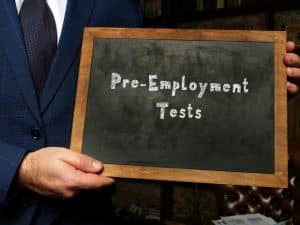Federal labor laws and related state labor laws affect all businesses with employees—even more so for companies with at least 50 workers. They govern workforce practices and areas such as overtime, minimum wage, on-call pay, employee breaks, sick leave, hiring minors, and employment discrimination. Labor laws provide workers with protections and contain enforcement and reporting…
What is
Fixed Asset Roll Forward: Template & Explanation
A fixed asset roll forward is an accounting process used to track changes in the fixed assets and accumulated depreciation accounts from the beginning to end of the year. It shows all fixed asset acquisitions, fixed asset disposals, and depreciation for the year, thus reconciling the beginning balance sheet amounts to the ending balance sheet…
Pre-employment Assessment: Types & How to Conduct One
A pre-employment assessment is a tool that companies use to determine a candidate’s ability to perform the core duties of the role they’re hiring for. Many organizations have shifted to this hiring approach, moving away from or in addition to degree requirements. Besides looking into both hard and soft skills, these assessment tests allow you…
What Is Business Ethics?
Ethics is a philosophical term that refers to the study of goodness and right action. Business ethics is the practice of applying ethics to business operations. Business ethics typically involve businesses holding themselves accountable to make business and operational decisions that support fair, transparent, and honest business practices. But business ethics is not one-size-fits-all; read…
What Is a Lapping Scheme? How It Works & Prevention
A lapping scheme is a type of employee fraud wherein the fraudster pockets the payment of one customer and applies the payment of the next customer to the first customer’s invoice.
A lapping scheme is usually caused by poor segregation of duties, nonexistent or inefficient internal controls, and inadequate supervision. Understanding how it is perpetrated in the business can help you detect it before your losses eat up your profits. We’ll teach you what preventive measures you can take against this fraudulent act, such as rotating…
How Does Depreciation Affect Cash Flow?
Depreciation doesn’t impact cash flow because it is a noncash expense. However, depreciation has an effect on the cash flow statement when the indirect method is used in computing cash flows from operating activities. Understanding the impact of depreciation on cash flow in the operating activities section can help you plan out future cash flows…
What Is Vendor Fraud? Types & Prevention Tips
Vendor fraud is committed by vendors who scam a business by asking it to pay more than originally owed, delivering counterfeit goods, or charging for items or services that weren’t delivered or performed.
The main challenge is finding a way to uncover vendor fraud since fraudulent acts are performed with the intent to conceal them. Businesses with weak or missing internal controls are at a high risk of this type of fraud. In this article, we’ll talk about the different kinds of vendor fraud and give you some…
What Is the Gig Economy?
The term “gig economy” describes one-time tasks and services performed for a fee, as opposed to traditional employer-directed jobs performed for a wage. Many people conversationally refer to gig work as “gig jobs,” which can confuse things. Gig work is not a job in the traditional sense. Gig workers are independent contractors, not employees. Most…







